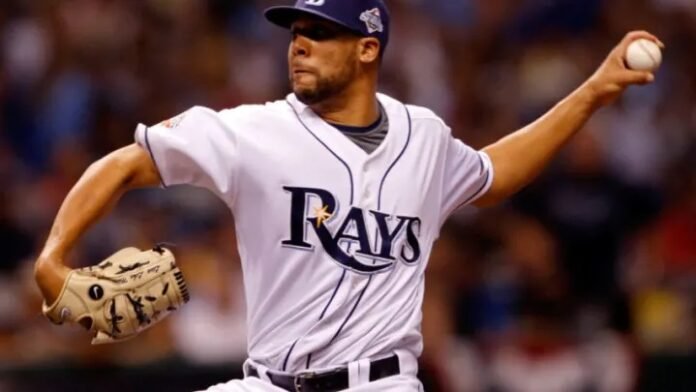Major League Baseball’s power hitters shape both games and betting markets. A handful of sluggers stand out this season, delivering performances that shift odds for home runs, RBI props, and even team win expectations.
It’s tempting to chase leaderboard names, yet informed bettors know context trumps volume. Readers learn to parse situational metrics, like night-versus-day splits or lefty-righty matchups, that affect odds more than hype.
With that in mind, let’s take a look at the five hitters whose early 2025 trends matter for prop and run-line strategies.
Aaron Judge Still Chasing .400
Aaron Judge entered June with a .396 batting average, 23 home runs, and an OPS of 1.264, ranking first in MLB in average and slugging. His RBI total sat near the league’s top tier, and on-base metrics confirmed he reached base at an elite clip. Historically, those figures place him in rare company, sustaining a pace unseen since Ted Williams’ era.
Underlying indicators reinforce why bettors monitor Judge closely. His average exit velocity was near 95.5 mph, with a hard-hit rate of 56.5% and barrel percentage of 23.7%. These metrics justify adjusting prop valuations upward rather than assuming a sudden downturn.
Judge’s splits versus left- and right-handed pitching, along with Yankee Stadium’s wind and night-game conditions, subtly affect his power. His steady walk and strikeout rates in high-leverage spots show resilience. When bettors spot markets lagging these factors, they can position ahead of line adjustments.
Observers monitor moneylines, run lines, and player props on FanDuel Sportsbook, among other reliable books. They compare Judge’s home/road splits to the odds on offer. When they spot a gap, for example, a prop that seems softer than his typical home-game performance, they strike quickly, locking in value before the market shifts.
Cal Raleigh’s Catcher-Power Surge
Catcher Cal Raleigh’s breakout power redefines positional norms and wagering possibilities. Currently leading MLB with 26 home runs, he outpaces even established sluggers in raw power numbers.
Hitting over 1.000 OPS from behind the plate underscores rarity as only a few catchers maintain such production without fatigue dips. For bettors, Raleigh’s surge affects run-line and totals markets whenever Seattle’s lineup faces pitchers with exploitable tendencies.
While tracking his individual splits such as home vs. away or day vs. night can provide useful data, broader context is still key. FanDuel’s MLB Stats and Trends offer league-wide data that can help bettors interpret performance patterns, monitor momentum shifts, and better understand how positional anomalies like Raleigh’s might influence odds over time.
Shohei Ohtani’s MVP-Caliber Punches
Ohtani has reached 23 home runs with a batting average of .292 and an OPS of 1.019. Those figures place him among league leaders and sustain his MVP conversation. Such consistency at the plate drives multiple betting angles beyond simple home-run totals.
Advanced metrics underline why Ohtani’s bat command matters for wagering models. His average exit velocity sits near 95.8 mph, with a hard-hit rate north of 63% and a barrel percentage above 21%. When these underlying indicators remain strong, bettors can trust that surface statistics are more likely to hold or improve rather than regress sharply.
Splits and venue effects further refine how Ohtani’s performance impacts odds. He shows noticeable differences against left- and right-handed pitchers, often posting higher slugging versus righties, which matters when setting prop valuations.
Ballpark factors also play a role. Dodger Stadium’s dimensions and wind patterns can boost or suppress its power compared to road parks. Observers who monitor his situational splits detect when markets lag in pricing those nuances, creating timely opportunities.
Freddie Freeman’s Consistent Contact
Freddie Freeman’s .351 average through early June highlights the value of contact-oriented hitters in prop markets. Ranking third in batting average, Freeman’s approach yields fewer boom-or-bust swings and more reliable hitting props.
His consistency influences on-base props and cumulative hit totals over series. Bettors focusing on series-long accumulation of hits or multi-hit game props find Freeman’s steady profile preferable to streaky sluggers.
Freeman’s situational splits, performance with runners in scoring position, and contact rates in two-strike counts offer more profound insight. Integrating those situational stats into models helps spot when standard lines undervalue his steadiness, creating edges in prop markets.
Rafael Devers Driving Runs in Boston
Rafael Devers currently ranks second in MLB with 57 RBIs, underlining his central role in run production. His .280 average and .925 OPS confirm that these aren’t empty stats but reflect sustained quality at the plate.
In the first two months, that output level shifts how bettors view run-line and team-total markets when Boston’s lineup faces pitchers prone to hard contact.
Advanced metrics reinforce why Devers demands attention in wagering models. Statcast data shows an average exit velocity of 94.1 mph and a hard-hit rate above 56%. These indicators mean bettors can trust his production isn’t a fluke and adjust prop valuations or team-run forecasts accordingly.
Situational splits reveal further edges. With runners in scoring position, Devers posts a .324 average and .563 slugging, markedly above his overall numbers. Tracking those splits helps identify moments, such as late-inning scenarios at home, where live and next-inning run bets gain extra appeal before the broader market reacts.
Beyond Early Headlines
Early-season numbers offer a starting point, but deeper context refines betting decisions. These five hitters exemplify how surface stats can mislead when taken at face value. Examining splits, park effects, pitcher matchups, and evolving trends reveals when odds trail actual performance. This approach transforms MLB wagering from reactive moves into strategies grounded in concrete signals.
